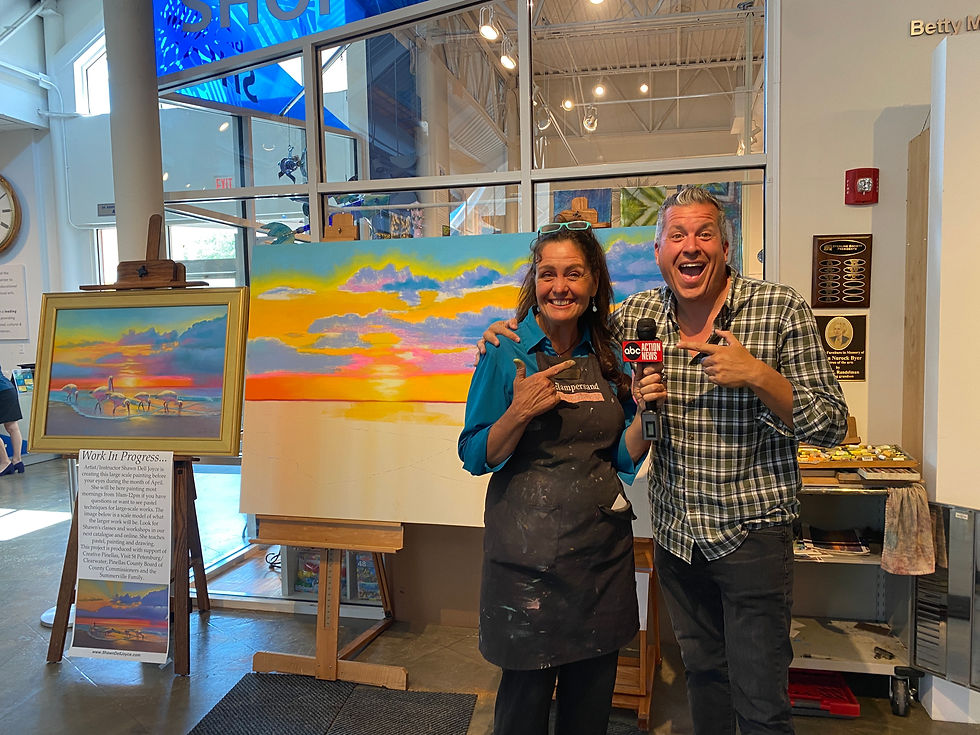When Life Hands You Lemons...
- Shawn Dell Joyce artist

- Sep 20, 2020
- 3 min read
We've all been "lifed" on. You know the feeling; your going along, living life, when suddenly big drama after big drama occurs. For many creative people, the first thing we sacrifice is our creative time. I'm here to talk you out of that.

Creative time is most necessary when you are processing heavy emotions like grief or anger. We need stillness, peace and serenity when the world around us is running amok! Serenity can come in many forms; some find it in prayer or yoga, but artists find it painting or creating.
When you paint, you center yourself on one thing, focusing all your attention on the painting and the way the light hits the subject. This concentrates the monkeys in your head on one single goal and helps quiet them. Once the monkeys are distracted, a portal opens inside you that allows peace and serenity in. It can be magical.
Betty Edwards in her groundbreaking book "Drawing on the Right Side of the Brain," discusses this concept in great length. She describes the feeling as "relaxed yet alert," "calm yet attentive." Many artists I've spoken to describe it as having conscious contact with a higher power.

As an artist, I seek solace in painting. Since I was a little girl I would sit by myself and draw to process emotions. I have sketchbooks dating back to 12 years old with pencil sketches of seagulls and hands. When I see these sketches, I can remember what song was on the radio, where I was, and even what I was thinking. Each of the paintings in this blog are paintings done during heavy emotional trauma in my life; death, divorce, loss, etc. Each painting helped me process and move through these feelings.
When you are overwhelmed emotionally, our first instinct is to shut down or run away from the pain. Instead, art helps you debride the wound so it heals cleanly. Don't use the heavy emotions as an excuse to not paint. If that happens it becomes a block.
In Julia Cameron's book "The Artist's Way" she speaks eloquently about stuck emotions and how these things become creative blocks which can debilitate you for years. She recommends treating yourself like your best friend, take yourself out on an "artist's date" to buy new materials, see a museum show, or other creative act that brings you closer to your art.

The worst thing to do when you are hurting is to look too critically at your work. When perfectionism invades your thoughts, it acts as a block and stops you from even trying. Why try if you'll never get it right? Push perfectionism out, and instead invite play in. If you allow yourself the latitude to play, you do not place expectations on yourself of making a perfectly polished painting, and instead, let yourself express, process, and enjoy the act of painting.
There will be time for perfectionism later when you do the details.
When my thought seethe with grief, and sadness, I paint. When I'm angry and hurt, I paint. When I don't know what else to do, I also paint. For me painting is a spiritual act as much as a physical act. It connects me with a source of eternal energy that flows through me; it's not me, or mine, but I tap into it when I paint. I call it serenity and it tastes like lemonade.
I wish for you to have this too.








Comments